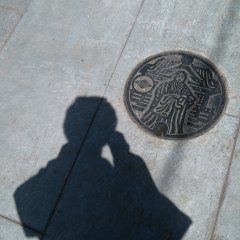Ehime, the third stage of the Shikoku Henro, is where pilgrims attain Enlightenment, a state of infinite knowledge, wisdom, and benevolence, after enduring the rigorous regimes of ascetic training. Some tough walking Henro testify they experience enlightenment as a feeling of nothingness, nothing hurts anymore, like a jogger’s high.
I have wondered whether I am a true henro. I choose temples at my convenience, even if justified, and I am still not walking the talk, getting to each and every temple no matter the odds. Enlightenment might be viewed less esoterically, though, or so I’m hoping. There might be other ways of seeing the light, or seeing other kinds of light. For me, enlightenment comes in the very prosaic form of mere learning, experience, and knowledge, a non-Eureka daily event as a henro. I’m floating, as it were, on a different astral plane.
The four stages of the Shikoku Henro are anyway extremely religious, demarcated by pioneer monks and pilgrims as a spiritual progression towards an ultimate Nirvana. They may, wrongly or rightly, appear to be all about doom and gloom as the only portals through which Enlightenment springs forth. This is rooted in history. We wear the white jacket because it symbolizes purity, but it is also the white of the shroud that early pilgrims who died from the horrors of the pilgrimage hoped to be buried in. To get to the point, the early pilgrims wore white in case they died on the spot. Hopefully they died happy, as henro, on the Henro. It is as Shakespeare noted, “If twere now to die, twere now to die most happy.”
The Henro’s beliefs are derivative of Shugendo, which has been seen as the underpinning force of the Henro. It is a brew of ascetic Buddhism and Shintoism, intertwined with dominant streaks of animism, mountain, and nature worship. In Matsuyama, Ehime, I have so far visited Joruriji Temple 46, Yasakaji Temple 47, Sairinji Temple 48, and Jodoji Temple 49. All displayed prominent signs of Shugendo.
At Joruriji, henro chanted Buddhist sutras looking on at multi-colored origami chains I’ve seen at Shinto shrines. Strange old and worn out relics also hung around. Old Juzo slept side by side with old moss covered sacred boulders and a sacred trees. Joruriji houses a Buddha of Healing. It also contains a stone image of Buddha's foot prints on a pedestal, with the belief that if you were able to stand with bare feet on the foot prints, all achy feet and leg pains would disappear. Nah, didn’t do it.
Jodoji appeared Shinto, but inside the Main Shrine were Buddhist ornaments, with mini Buddha juzo statues. At Yasakaji, ash remnants were visible from a fire walking ritual for a fierce looking God.
Here are the 10 Pilgrim Commandments:
I will not harm life, steal, commit adultery, tell a lie, exaggerate, speak abusively, equivocate, be greedy, be hateful or lose sight of the truth.
They are actually the rules for how to behave on the Henro. But anything helps towards Enlightenment, right?
































